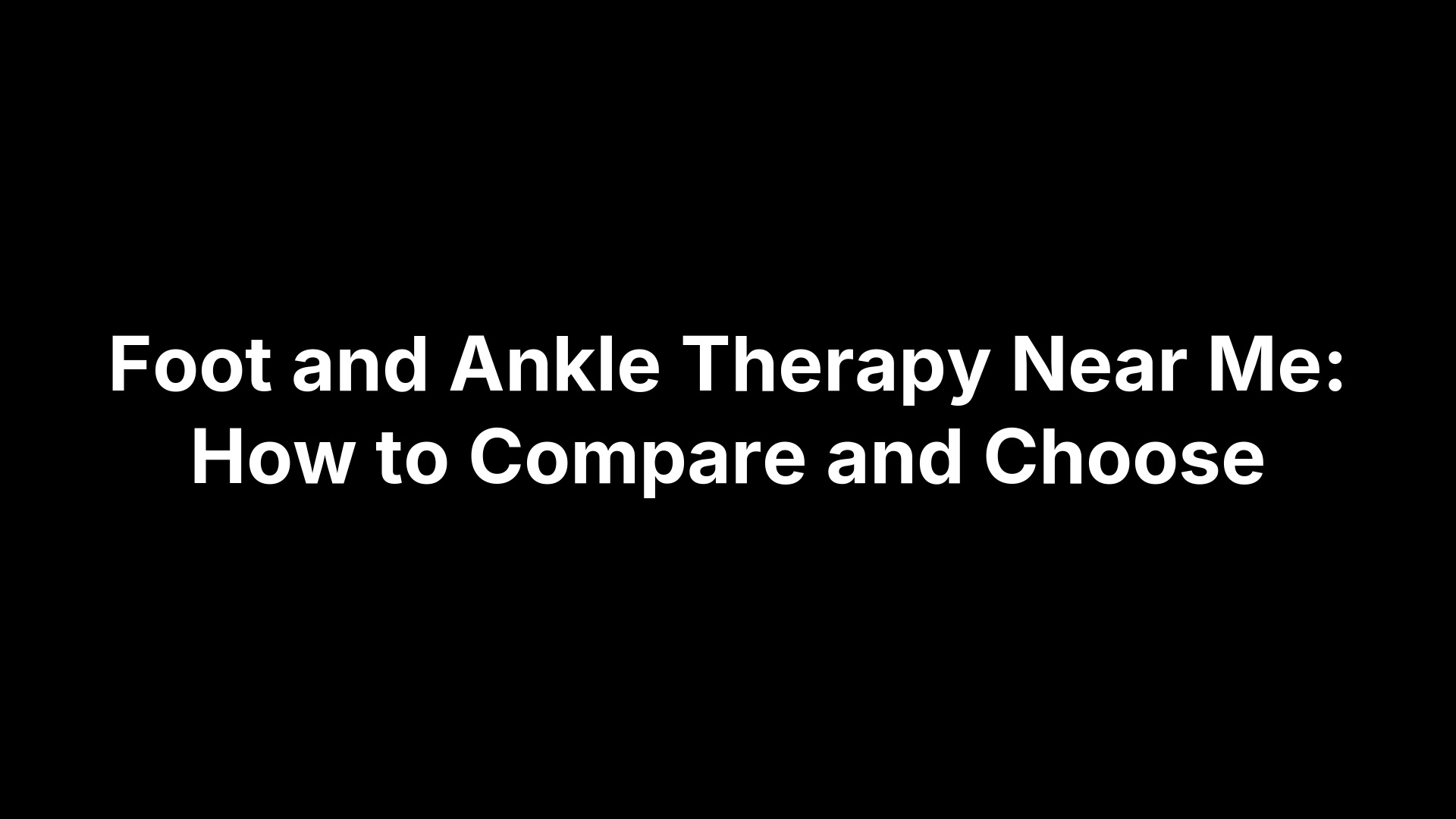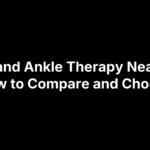Sore heels after a shift, aching knees at mile three, or toes that feel crammed by noon—too many people chalk those problems up to “just how my feet are.” In most cases, it’s the shoes. The right pair can ease plantar fasciitis, tame overpronation, protect diabetic feet, and keep you comfortable on long days. The challenge is knowing what to trust: neutral vs. stability, motion control, APMA-accepted labels, rocker soles, zero drop—the choices (and marketing) can be overwhelming. You want footwear your podiatrist would actually stand behind.
This guide cuts through the noise. Our podiatry team curated 11 proven, podiatrist-recommended options for different foot types and needs—from neutral cushioning workhorses to stability and maximum control models, cushioned all-day standers, extra-depth styles for diabetes and arthritis, trail-ready picks, and a minimalist option if you’re transitioning carefully. For each shoe, you’ll see who it’s best for, why podiatrists recommend it, fit/sizing notes, key specs, and where to buy or get fitted. Prefer a personalized assessment? We also highlight how Achilles Foot & Ankle Center can match you with the right shoe or custom orthotics at our Central Virginia locations. Ready to feel the difference the right pair makes? Let’s get you into shoes that truly fit your feet and your life.
1. Achilles Foot & Ankle Center: personalized shoe fitting and custom orthotics
If you’re unsure which podiatrist recommended shoes fit your foot type—or you’ve tried “good” shoes and still hurt—start here. Our clinicians evaluate your biomechanics, gait, and medical history to match you with the right footwear category and, when needed, prescribe custom orthotics or diabetic shoes to relieve pain and protect your feet.
Who it’s best for
Patients with plantar fasciitis or [heel pain](https://achillesfootandankle.com/shoes-for-heel-pain-relief/), overpronation or flat feet, high arches, bunions, neuromas, arthritis, or neuropathy; people with diabetes requiring protective, extra‑depth footwear; athletes rehabbing injuries; and anyone who spends long hours on hard floors and needs durable, supportive, podiatrist-recommended shoes.
Why podiatrists recommend it
Because a proper shoe is a medical intervention when it’s chosen for your mechanics—not just your size. We offer full-spectrum care (conservative to surgical), advanced imaging when indicated, on-site orthotic and bracing solutions, and guidance toward APMA-accepted and stability/neutral/motion-control categories proven to reduce strain. One team coordinates your plan, adjusts as you improve, and helps you avoid costly missteps.
Fit, sizing and key specs
During a personalized fitting, we confirm length, width, and volume, assess heel stability and arch needs, and translate that into the right shoe class and orthotic features. Expect clear guidance on:
- Foot type mapping: Neutral vs. mild/moderate/maximum control needs.
- Toe box and depth: Room for forefoot pathologies or extra‑depth diabetic footwear.
- Support profile: Arch support, heel counter firmness, and cushioning levels.
- Use case: Road, trail, work, or all‑day standing requirements.
Where to buy or get fitted
Book an appointment at any of our thirteen Central Virginia locations for a professional fitting, orthotic prescription, or diabetic shoe evaluation. Same-day visits are often available, we accept all major insurance plans (including Medicare/Medicaid), and you can manage scheduling and paperwork via the patient portal.
2. Brooks Ghost 16 (neutral cushion, APMA accepted)
When patients want a dependable daily trainer that just works, Ghost 16 is a frequent pick among podiatrist recommended shoes. It’s a neutral, moderately cushioned model with the American Podiatric Medical Association (APMA) Seal of Acceptance and a track record for comfort on walks, runs, and all‑day wear.
Who it’s best for
Neutral walkers and runners, beginners building mileage, and anyone who wants a soft, smooth ride without intrusive stability tech. It’s also a smart choice if you need multiple width options for a better fit or prefer a shoe that transitions well from errands to exercise.
Why podiatrists recommend it
The Ghost 16 balances cushioning and support, offering reliable shock absorption and a secure heel without feeling bulky. The APMA acceptance signals it promotes good foot health, and its comfortable upper plus consistent ride help reduce hot spots that often derail new walking or running routines.
Fit, sizing and key specs
Expect a dialed‑in fit with plenty of sizes and widths. Many users find the Ghost 16 runs about a half‑size small, so plan your try‑on accordingly.
- Category: Neutral cushion (road/daily trainer)
- APMA: Seal of Acceptance
- Cushion feel: Moderate, smooth underfoot
- Widths: Narrow, Medium, Wide, X‑Wide
- Fit notes: Often runs 1/2 size small; secure heel, roomy forefoot for most
Where to buy or get fitted
Try the Ghost 16 at a specialty running store for proper sizing, or schedule a fitting at Achilles Foot & Ankle Center. Our team can confirm you’re a neutral candidate—or redirect you to a stability or motion‑control option if your mechanics need more guidance.
3. Hoka Clifton 9 (neutral/high cushion, APMA accepted)
Think plush, smooth, and deceptively light. The Hoka Clifton 9 is a neutral, high‑cushion daily trainer that earns steady praise among podiatrist recommended shoes. It carries the American Podiatric Medical Association (APMA) Seal of Acceptance and delivers a soft, consistent ride that works for walking, easy runs, and even general gym sessions without feeling clunky.
Who it’s best for
Neutral walkers and runners who want maximum shock absorption with a balanced, not‑mushy feel. It’s a strong pick for long days on hard floors, recovery miles, or anyone with joint sensitivity who benefits from extra cushioning to reduce impact while maintaining a comfortable, secure fit.
Why podiatrists recommend it
The APMA Seal signals the Clifton 9 supports overall foot health. Podiatrists favor its blend of good arch support and standout shock absorption that helps ease stress on feet, ankles, and knees. Testers also note a bit of rebound off the ground, which can keep efforts feeling smooth as you stack up steps or miles.
Fit, sizing and key specs
The Clifton 9 runs on the narrow side with less ground feel than firmer shoes. If you prefer extra forefoot space, consider trying a half‑size up during your fitting.
- Category: Neutral, high cushion daily trainer
- APMA: Seal of Acceptance
- Ride feel: Soft cushioning with light rebound
- Fit notes: Runs narrow; dial in toe room during try‑on
- Upper/materials: Knit upper; uses recycled content
- Best for: Daily walks/runs, long wear, general gym use
Where to buy or get fitted
Get sized at a specialty running shop or book a fitting at Achilles Foot & Ankle Center. We’ll confirm that a neutral, high‑cushion profile suits your gait—or steer you toward stability or motion‑control options if your mechanics need more guidance.
4. Asics Gel-Kayano 31 (stability for mild–moderate overpronation)
A longtime favorite in the stability category, the Gel‑Kayano 31 is built for runners and walkers who roll inward and need guidance without the bulk of maximum motion control. It’s a daily trainer you can trust to steady your stride while keeping cushioning balanced and comfortable.
Who it’s best for
People with mild–moderate overpronation, flat or flexible arches, recurring medial shin or knee discomfort, or anyone who’s tried neutral shoes and still feels collapsed through the arch. It’s also a reliable choice for new walkers/runners who want a supportive, predictable platform for building mileage.
Why podiatrists recommend it
Independent podiatry lists place the Kayano in the mild motion control class, making it a smart option when you need structure but not a “brick.” Stabilizing features help slow excessive inward roll, a firm heel counter improves rearfoot control, and balanced cushioning helps manage impact so feet, ankles, and knees take less stress over time.
Fit, sizing and key specs
Start with a professional try‑on to ensure proper arch alignment and heel security; aim for a thumb’s width of space at the toes to accommodate natural swelling.
- Category: Stability trainer for mild–moderate overpronation
- Support feel: Guided, not rigid; balanced cushioning
- Use case: Daily walking/running, easy to moderate efforts
- Fit notes: Prioritize heel lock and midfoot hold; confirm toe‑box room
- Pro tip: Test in your usual socks and orthotics (if used)
Where to buy or get fitted
Visit a specialty running shop for gait-informed sizing, or book a fitting at Achilles Foot & Ankle Center. Our team will confirm whether a stability model like the Kayano is right for your mechanics—or steer you to neutral or motion‑control alternatives if needed.
5. New Balance 860v13 (stability with multiple widths)
If you need dependable guidance without a bulky feel, the New Balance 860v13 belongs on your shortlist of podiatrist recommended shoes. It’s a stability workhorse designed for everyday walking and running, and it comes in multiple widths so more foot shapes can land a secure, comfortable fit that actually supports healthy mechanics.
Who it’s best for
Walkers and runners with mild–moderate overpronation, flexible/low arches, or recurring medial shin and knee discomfort. It’s also ideal if you’ve struggled to find a supportive shoe that fits wider feet, narrow feet, or orthotics thanks to New Balance’s broad sizing options.
Why podiatrists recommend it
The 860 is regularly featured on independent podiatry lists as a mild motion‑control/stability option, offering guided support to slow inward roll without feeling rigid. New Balance’s commitment to multiple widths helps achieve proper midfoot hold and toe‑box room—two fit factors that can make or break comfort and injury prevention when you’re logging daily miles.
Fit, sizing and key specs
Start with a professional try‑on to confirm heel security and arch alignment, and aim for a thumb’s width of space up front to account for swelling.
- Category: Stability trainer for mild–moderate overpronation
- Widths: Typically available in Narrow, Standard, Wide, Extra‑Wide
- Ride feel: Balanced cushioning with steady guidance
- Fit notes: Prioritize midfoot lock and a firm heel counter; orthotic‑friendly
- Best for: Daily walks/runs, beginner to intermediate mileage
Where to buy or get fitted
Get sized at a specialty running store or book a fitting at Achilles Foot & Ankle Center. We’ll confirm whether a stability profile like the 860v13 suits your gait—or redirect you to neutral or maximum control options if your mechanics call for it.
6. Brooks Beast ’20 (men) / Ariel ’20 (women) (maximum motion control)
When feet collapse inward significantly, neutral or light‑stability models usually aren’t enough. Brooks’ Beast ’20 and Ariel ’20 are frequently cited on independent podiatry lists as maximum motion‑control options, making them go‑to podiatrist recommended shoes for taming severe overpronation with a stable, confidence‑inspiring platform.
Who it’s best for
Individuals with marked overpronation, very flat or flexible arches, recurring medial ankle/knee pain related to collapse, or those who haven’t found relief in neutral or mild stability shoes. Also helpful for heavier walkers/runners who benefit from extra guidance and for patients pairing footwear with custom orthotics.
Why podiatrists recommend it
These models sit at the top of the motion‑control spectrum on podiatry recommendation lists, offering robust guidance to slow excessive inward roll. A supportive platform and firm rearfoot control can reduce strain on the plantar fascia, posterior tibial tendon, ankles, and knees—especially when daily miles or long standing shifts add up.
Fit, sizing and key specs
Plan a professional try‑on to confirm alignment and lock‑down; ensure a thumb’s width of toe room for swelling and orthotic accommodation if needed.
- Category: Maximum motion control (road/daily trainer)
- Support feel: Firm guidance with pronounced stability
- Best for: Severe overpronation, flat/flexible arches, higher loading
- Fit notes: Prioritize firm heel counter and midfoot hold; orthotic‑compatible setups are common
- Comfort goal: Stable base that resists collapse without excessive bulkiness
Where to buy or get fitted
Test Beast ’20/Ariel ’20 at a specialty running store or book a gait‑informed fitting at Achilles Foot & Ankle Center. We’ll verify you truly need maximum control—or, if appropriate, downshift you into stability or neutral options that better match your mechanics and comfort goals.
7. Hoka Bondi 8 / Bondi SR (plantar fasciitis and standing all day)
If you want maximum softness underfoot, the Hoka Bondi line is hard to beat. The Bondi 8 delivers one of the brand’s plushest rides for walking and easy running, while the Bondi SR/Leather variant offers a durable, work‑friendly upper for long shifts on hard floors. It’s frequently featured on independent podiatry recommendation lists and is a reliable choice when you need all‑day comfort from podiatrist recommended shoes.
Who it’s best for
People with heel pain or plantar fasciitis who benefit from serious shock absorption, anyone on their feet for hours at a time, and neutral walkers/runners who prefer a soft, protective feel. It’s also a smart option for joint sensitivity when you need cushion to take the edge off impact.
Why podiatrists recommend it
High, consistent cushioning helps reduce load through the heel and forefoot, which can ease stress on the plantar fascia and neighboring structures during long days. Our clinicians like the Bondi’s secure rearfoot feel and smooth, protective ride that encourages steady, repeatable steps—useful when you’re racking up miles at work or in training.
Fit, sizing and key specs
Plan a professional try‑on; the Bondi’s high stack offers less ground feel than firmer shoes, so comfort and stability checks matter.
- Category: Neutral, maximum cushion (daily walking/running, long wear)
- Ride feel: Very soft, protective, smooth transitions
- Variants: Bondi 8 (engineered mesh); Bondi SR/Leather (durable, work‑ready upper)
- Fit notes: Confirm heel lock and toe‑box room; test with your usual socks and any orthotics
- Comfort goal: Impact reduction for heels and forefoot over extended hours
Where to buy or get fitted
Try the Bondi 8 or Bondi SR at a specialty running store, or book a gait‑informed fitting at Achilles Foot & Ankle Center. We’ll verify that a high‑cushion neutral model is right for your mechanics—or steer you to other podiatrist recommended shoes if you need stability or motion control instead.
8. Altra Torin 7 (wide toe box and zero drop for bunions/natural foot shape)
If your forefoot feels cramped in standard trainers, the Torin 7 brings Altra’s signature FootShape toe box and zero‑to‑low drop design to a cushioned, everyday shoe. Among podiatrist recommended shoes, it’s a popular neutral option for walkers and runners who want space for toe splay and a more natural feel without going minimalist.
Who it’s best for
- Bunions, wide forefoot, or toe splay: The roomy, anatomical toe box reduces pressure on the forefoot.
- Neutral walkers/runners: Great if you want a natural stride and a cushioned road trainer for daily miles.
- Transitioning from traditional drop: Ideal for those easing toward a lower drop; start gradually, especially if your calves/Achilles are tight.
- All‑day comfort users: A versatile pick for errands, commuting, and fitness walking.
Why podiatrists recommend it
- Room for toes to move: Altra’s FootShape design supports natural foot positioning that can lessen hot spots and rubbing.
- Natural alignment feel: Zero‑to‑low drop encourages a more level platform underfoot. Note: people with Achilles tendinitis often do better avoiding no‑drop shoes because lower heels can increase tendon strain.
- Trusted brand presence: Altra models appear on independent podiatry lists in the cushion‑neutral category, and running shoes are frequently recommended by podiatrists for walking due to their structure and shock absorption.
Fit, sizing and key specs
- Category: Neutral, cushioned road trainer
- FootShape design: Wide, anatomical toe box for forefoot room
- Drop: Zero‑to‑low (brand design philosophy); transition slowly to allow calf/Achilles adaptation
- Fit tips: Aim for a thumb’s width up front, check a snug heel counter and midfoot hold, and test with your usual socks/orthotics
- Use case: Daily walking/running, errands, travel
Where to buy or get fitted
Try the Torin 7 at a specialty running store for sizing and gait feedback, or book a fitting at Achilles Foot & Ankle Center. We’ll confirm if a low‑drop, wide toe‑box shoe fits your mechanics—or steer you to other podiatrist recommended shoes if you have active Achilles issues or need more stability.
9. Hoka Speedgoat 5 (trail running — neutral, grippy and stable)
When your miles head off-road, you need traction, protection, and a steady platform you can trust on roots, rocks, and loose dirt. The Hoka Speedgoat 5 is a staple among podiatrist recommended shoes for trail days—listed by independent podiatry sources as a cushion‑neutral trail option—delivering confidence on uneven terrain without heavy, intrusive support.
Who it’s best for
Neutral trail runners and hikers who want reliable grip and cushioned protection on dirt singletrack, fire roads, and mixed terrain. It’s also a smart pick for road‑to‑trail routes if you want a forgiving ride the moment your path turns to gravel.
Why podiatrists recommend it
Independent podiatry lists place Speedgoat in the cushion‑neutral trail category, making it a solid match when you don’t need motion control but do need dependable traction and impact absorption on descents. That combo helps reduce slips and repetitive stress to feet, ankles, and knees as the ground tilts and cambers change.
Fit, sizing and key specs
Start with a trail-specific try‑on to make sure you’ve got foothold for side‑hills and a touch of extra toe room for downhill comfort.
- Category: Trail running, cushion‑neutral
- Terrain focus: Dirt, gravel, roots, rocky paths
- Ride feel: Protective cushioning with secure footing
- Fit notes: Snug midfoot/heel for stability; a thumb’s width at the toes for descents; test in your trail socks and with orthotics if used
- Use case: Daily trail runs, hiking, road‑to‑trail
Where to buy or get fitted
Try the Speedgoat 5 at a specialty running/outdoor shop or book a gait‑informed fitting at Achilles Foot & Ankle Center. If your mechanics need guidance beyond neutral, we can point you to stability‑leaning trail options also featured on podiatry lists and ensure your footwear matches your terrain and foot type.
10. Orthofeet Coral (women) / Edgewater (men) (diabetes, arthritis, extra depth)
For patients who need comfort, protection, and room to accommodate swelling or medical inserts, Orthofeet’s Coral (women) and Edgewater (men) are standouts among podiatrist recommended shoes. These orthotic and orthopedic sneakers are built to relieve pain and enhance comfort—particularly for sensitive feet affected by diabetes, arthritis, or neuropathy—without looking overly clinical.
Who it’s best for
Ideal for adults with diabetes who require extra‑depth footwear, those with arthritis or forefoot sensitivity, people managing neuropathy who benefit from a cushioned, forgiving platform, and anyone who needs a roomier, therapeutic fit that pairs well with custom orthotics from a podiatrist.
Why podiatrists recommend it
Orthofeet is known for deep, cushioned insoles and ergonomic soles that help reduce pressure and improve step‑to‑step comfort. That combination supports healthier mechanics and can ease hotspots for patients who can’t tolerate firm, minimal shoes. As a category, well‑constructed running/walking shoes are frequently favored by podiatrists for walking due to their structure and shock absorption—Orthofeet adds therapeutic depth and comfort‑first design to that foundation.
Fit, sizing and key specs
Begin with a professional try‑on to verify toe room and midfoot security, and to ensure the shoe accommodates your orthotics and daily swelling.
- Category: Orthotic/orthopedic walking sneaker with extra depth
- Support feel: Cushioned, ergonomic sole designed for pressure relief
- Foot needs: Diabetes, arthritis, neuropathy, sensitive forefoot
- Fit notes: Confirm a thumb’s width at the toes; check heel hold with your usual socks and any prescribed inserts
- Orthotic pairing: Designed to work alongside podiatrist‑prescribed support
Where to buy or get fitted
You can find Orthofeet through therapeutic footwear retailers, but the safest path is a clinical fitting. Book an evaluation at Achilles Foot & Ankle Center for diabetic shoe assessment and orthotic pairing. Our team will confirm if Coral/Edgewater fit your medical needs—or guide you to another therapeutic model that better matches your foot type and insurance benefits.
11. Vivobarefoot Primus Lite III (minimalist/low profile — transition gradually)
Minimalist by design, the Primus Lite III is built to promote natural foot movement and proprioception. It’s a low-profile training shoe often chosen for gym work and technique drills, but—as many podiatry sources caution—minimal shoes aren’t right for every foot type or condition and should be introduced gradually to avoid overload.
Who it’s best for
If you have generally healthy mechanics and want more ground feel for strength training, mobility work, short walks, or form drills, this can be a useful tool. It also suits experienced walkers/runners looking to complement a primary supportive shoe with a minimalist option in controlled sessions.
- Best use cases: Gym/training, mobility, short, easy walks
- Good candidates: Those seeking natural movement and better proprioceptive feedback
- Not ideal: Active injuries, significant overpronation, or conditions needing structure
Why podiatrists recommend it
When selected for the right foot and used correctly, minimal footwear can help engage intrinsic foot muscles and improve awareness of foot placement—benefits that carry over to stronger, more efficient movement. Podiatry guidance emphasizes that minimalist styles may not suit all feet and should be phased in carefully; people with Achilles tendinitis, for example, often do better avoiding very low heel-to-toe profiles.
- Natural movement: Encourages foot mobility and proprioception
- Strength stimulus: Can complement rehab/prehab when introduced slowly
- Clinical caution: Not for all foot types; progress over weeks, not days
Fit, sizing and key specs
Start with a professional try-on and a conservative break-in plan. Expect a very flexible, thin sole with minimal cushioning and high ground feel.
- Category: Minimalist/low-profile training shoe
- Ride feel: Flexible, close-to-ground, little shock absorption
- Transition plan: Alternate with supportive shoes; add time incrementally
- Fit tips: Ensure secure midfoot/heel; leave a thumb’s width at toes
- Orthotics: Typically not designed for thick inserts; verify compatibility
Where to buy or get fitted
Minimalist transitions are safest with expert oversight. Book a gait-informed fitting at Achilles Foot & Ankle Center to confirm if a minimalist shoe belongs in your rotation and to map a stepwise transition. If your mechanics require support, we’ll recommend alternative podiatrist recommended shoes that better match your foot type and goals.
Find your perfect fit
The right shoe doesn’t just feel better—it changes how you move. If you’re neutral, a cushioned daily trainer like Ghost 16 or Clifton 9 can keep you consistent. If you overpronate, stable guidance from Kayano or 860v13 helps your arch and knee track straighter. Severe collapse? Beast/Ariel offers top-tier control. Sensitive or medical needs? Orthofeet’s extra depth protects. Trail days call for Speedgoat; minimalist sessions require a slow, careful transition.
Your next step: try before you buy. Aim for a thumb’s width at the toes, a secure heel, and midfoot lock that matches your arch and orthotics. If you’re still unsure—or pain keeps returning—get eyes on your gait. Book a personalized fitting with Achilles Foot & Ankle Center for shoe selection, orthotic pairing, and a plan that supports your feet, your activity, and your goals.






